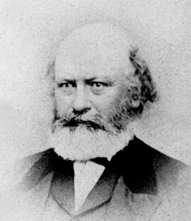Alonzo A. Skinner facts for kids
Quick facts for kids
Alonzo A. Skinner
|
|
|---|---|
 |
|
| 16th Associate Justice of the Oregon Supreme Court | |
| In office 1866–1867 |
|
| Appointed by | George Lemuel Woods |
| Preceded by | Riley E. Stratton |
| Succeeded by | John Kelsay |
| Personal details | |
| Born | January 16, 1814 Portage County, Ohio |
| Died | April 30, 1877 (aged 63) Santa Barbara, California |
| Spouse | Elizabeth Hopkins Lincoln (1811–1894) |
Alonzo Albert Skinner (born January 16, 1814 – died April 30, 1877) was an important American judge and politician. He was a member of the Whig party in Oregon. He served as an Associate Justice on the Oregon Supreme Court. He also worked as a circuit court judge, a customs collector, and a judge for Oregon's early government.
Contents
Early Life and Moving West
Alonzo Skinner was born in Portage County, Ohio in 1814. He studied law there and became a lawyer in 1840. In 1842, he moved to Putnam County, Ohio. He worked as a part-time prosecutor for the county.
In 1845, Skinner began a long journey on the Oregon Trail. This trip took seven months. He was moving to Oregon Country, which was a new frontier at the time. He arrived in Oregon City, Oregon later that year. Alonzo then started farming in the Tuality District. He also continued to work as a lawyer.
A Career in Oregon Politics
Alonzo Skinner played many roles in Oregon's early government.
Judge for the Provisional Government
Starting in December 1846, Skinner became a circuit judge for the Provisional Government of Oregon. This was the first government in Oregon before it became a U.S. territory. As a circuit judge, he traveled around to different county courts. He rode from March through November each year. This was like being a traveling judge. He earned $800 a year for this job. He served until 1849, when the U.S. Territorial Government took over.
Working with Native American Tribes
In June 1850, Skinner joined a special group called the Indian Commission. The United States government set up this group. Their job was to make agreements with Native American tribes in Oregon. These tribes lived west of the Cascade Mountains.
The commission was formed because of the Donation Land Claim Act of 1850. This law allowed settlers to claim large areas of land. The government wanted to open up lands west of the Cascades for settlement. They also wanted to move Native Americans to Eastern Oregon. Skinner and the other commissioners signed 19 agreements. These agreements allowed some tribes to stay on the west side of the Cascades. The commission finished its work in February 1851.
In 1851, Alonzo Skinner was also chosen as an Indian agent for Southern Oregon. This meant he worked for the government to manage relations with Native American tribes in that area.
Running for Office
In 1853, Skinner ran for a big political job. He wanted to be the territorial delegate to Congress for the Oregon Territory. This person would represent Oregon in the U.S. Congress. Skinner was a candidate for the Whig party. He lost the election. During his campaign, he spoke about building a railroad across the country.
Life and Work in Oregon Towns
In 1856, Skinner moved to Pacific City, Washington. There, he married Elizabeth Hopkins Lincoln on May 22. Elizabeth was a teacher from Vermont. Alonzo and Elizabeth later taught school in Astoria, Oregon.
Two years later, they moved to Willamina, Oregon. Alonzo had claimed land there in 1850. The Skinners then moved to Eugene, Oregon. Alonzo went back to working as a lawyer. In Eugene, he also served as the city's recorder. He was elected as a county clerk in 1862. During the American Civil War, Skinner helped the United States Army as a civilian.
Serving on the Supreme Court
In 1866, Oregon Governor George Lemuel Woods appointed Alonzo Skinner to the Oregon Supreme Court. He took the place of Justice Riley E. Stratton, who had passed away. Skinner served on Oregon's highest court until 1867. He was then replaced by John Kelsay, who won the election for the position.
Later Life and Passing
After his time on the Supreme Court, Skinner continued to serve as a circuit court judge. He held this position from 1867 to 1870.
Later, he was appointed as a customs collector for the United States. He worked at Empire City, Oregon. However, Alonzo Skinner had poor health. In 1877, he moved to California hoping to feel better. Sadly, he passed away that year on April 30 in Santa Barbara, California.

